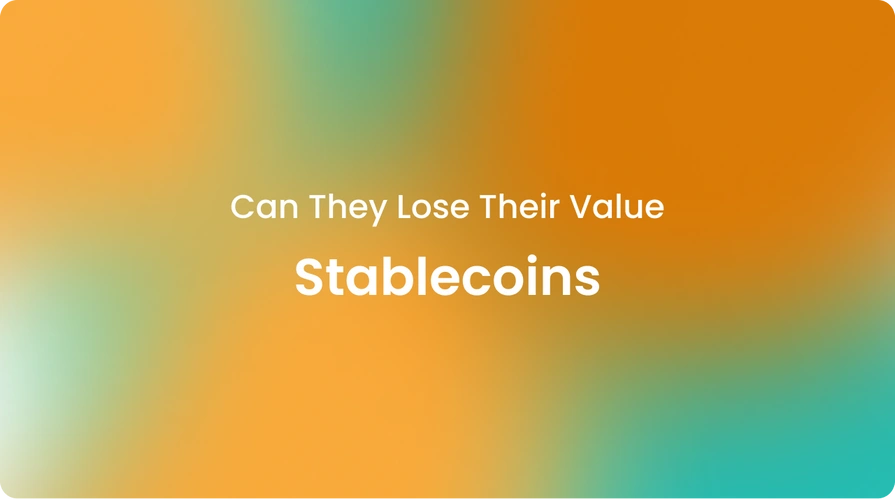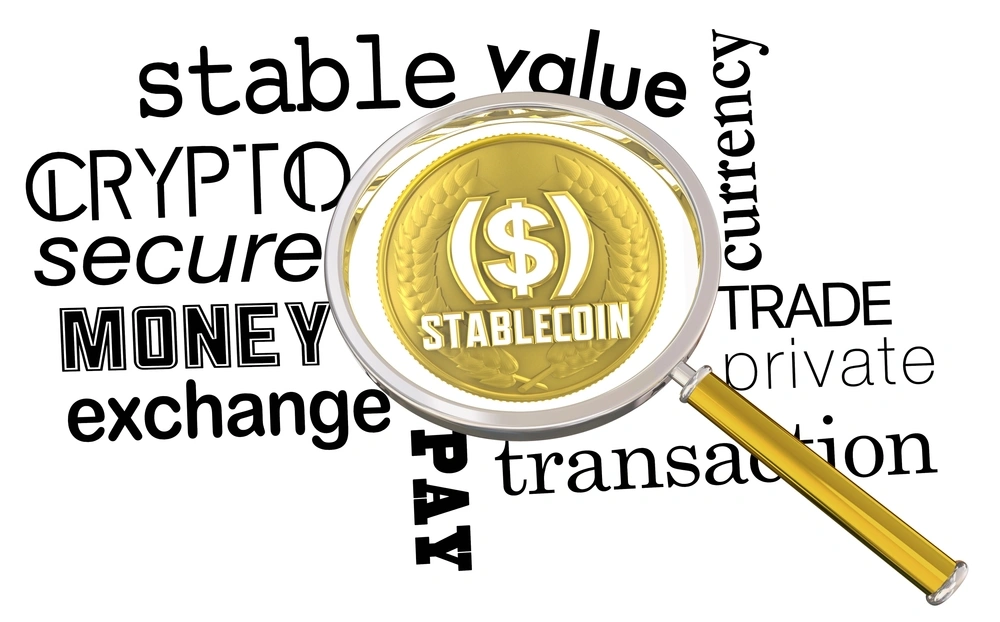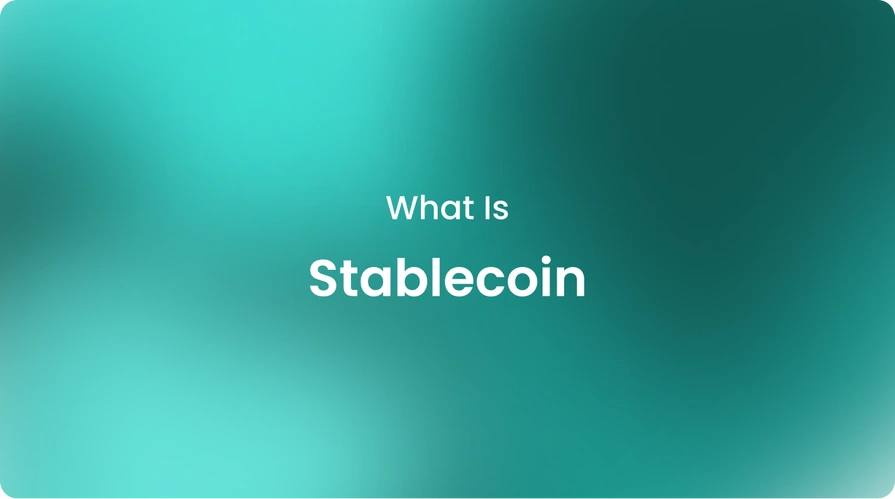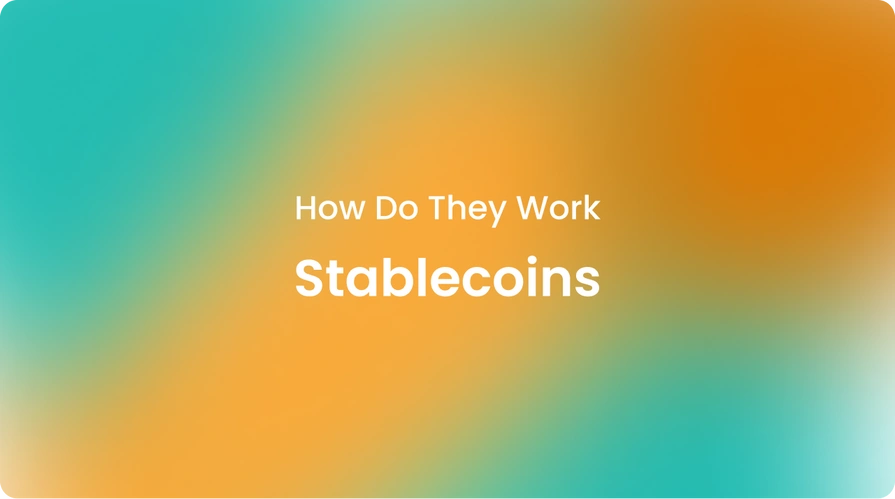|stablecoins
Can Stablecoins Lose Their Value?

Stablecoins have emerged as one of the most important innovations in cryptocurrency, offering price stability that other digital assets lack, but can stablecoins lose their value?
As with any new technology, the risk remains that some stablecoins could potentially lose their pegged value under certain conditions. Let's take a deeper look into the stability of stablecoins and what the future may hold for these dollar-linked digital currencies in this comprehensive guide!
Do stablecoins change in value?
In normal market conditions, responsibly managed stablecoins like EURK generally trade within a tight range, very close to their pegs. Cryptobunq issues EURK, a 1:1-backed euro stablecoin, which maintains a constant €1 price through reserves in multiple regulated banks.
EURK on average trades between €0.999 and €1.001 without major price swings. This stability allows EURK to reliably facilitate crypto payments, much like holding fiat currency.
This stability limits fluctuations to minor cryptocurrency exchange rate differences instead of double-digit price changes, unlike volatile crypto assets. Additionally, EURK offers liquidity in stablecoin and transparency for stablecoin features that develop its security.
However, macroeconomic factors or solvency issues within a stablecoin ecosystem could potentially push it outside this narrow band. While perfect peg maintenance remains difficult, top stablecoins like EURK have so far proven resilient in the face of shorter-term market pressures.
Can a stablecoin fail?
No currency or financial instrument is entirely without risk of failure. History has shown that even stablecoins, for all their promise of stability, are still novel technologies that may encounter unforeseen flaws or lack sufficient liquidity in a crisis.
The question then is: has a major stablecoin failed yet, and if so, how? Most significantly, the TerraUSD (UST) algorithmic stablecoin completely lost its $1 peg in May 2022 after developing systemic weaknesses.
As demand fell, its complex blockchain-based algorithms were unable to maintain price stability. This collapsed UST's integrated stablecoin-cryptocurrency system and wiped out much of the project's $60 billion total value.
While a unique case as an algorithmic stablecoin, Terra's failure highlighted vulnerabilities stablecoins might face in a bank run-like scenario. More rarely, fiat-collateralized stablecoins have also de-pegged temporarily during periods of severe volatility or loss of depositor confidence.
Thankfully, with responsible backing and suitable liquidity, the major fiat-backed stablecoins have mostly managed to maintain or recover their pegs after brief challenges. Overall, stablecoins can fail, but issuers can reduce the prospects of failure by demonstrating transparency and maintaining sufficient reserves.
Has a stablecoin ever failed?
While most major stablecoins have weathered short-term turmoil, TerraUSD stands out as the largest stablecoin failure to date. Its collapse rippled throughout the crypto space and underlined the risks of algorithmic stablecoins without deep liquidity buffers or a fallback peg.
Prior to that, the Basis stablecoin in 2018 lost its peg amidst low confidence after only 6 months of existence. And in 2020, Iron Finance's Titan token crashed from $64 to near zero due to a bank run, wiping out $2 billion in value.
More recently, in September 2022, Nomad's Bridge suffered an estimated $200 million hack, which caused its stablecoin implementation, USDx, to temporarily de-peg. Failures have tended to involve algorithmic or non-transparent stablecoin projects still early in their development.
Meanwhile, larger and more reputable fiat-backed currencies like the EURK stablecoin have proven resilient even in very volatile conditions, a testament to the security advantages of real-world backing when managed prudently.
Looking ahead, transparency and oversight will remain important to give investors confidence that popular stablecoins can withstand stress on their pegs.
Will stablecoins survive?
Looking forward, whether stablecoins can achieve truly long-term stability depends in large part on widespread adoption, inside and outside of cryptocurrency. As the market matures, pressure on the few pioneers to scale responsibly may increase.
Incidents like UST's demise show the need for safeguarding reserve capital through diversified, overcollateralized holdings like EURK's audited banks across multiple jurisdictions.
On the other hand, growing usage could strengthen stablecoins through higher liquidity and network effects, making depegging rarer thanks to a robust user base confident in mechanisms attached to real value like fiat currency held in trust.
With continued upgrades to risk management and transparency by vetted issuers, stablecoins have a reasonable chance of reaching a scale where they become dependable currencies in their own right through consistent stability over many business cycles outside of crypto.
If stablecoins can gradually address core problems around reserves, technology risks, and lack of adoption while maintaining trust as new users bring new demands, their survival becomes plausible.
Long-term stability once seemed unlikely for the Bitcoin network too; however, with responsible expansion, stablecoins may yet achieve permanence, supporting a variety of regular payments worldwide.
Why are stablecoins the future?
Regardless of short-term bumps, stablecoins represent an inevitable part of the future financial system for several reasons. They connect cryptocurrency's benefits of speed, efficiency, and programmability to regulated fiat assets without volatility.
This allows experimenting with crypto services like remittances, lending, and crypto trading safely. Stablecoins can also enhance financial inclusion worldwide by potentially making banking accessible to billions more through smartphones alone.
Perhaps most importantly, they enable entirely new decentralized finance (DeFi) ecosystems for swapping assets or earning yield in a trustless manner without reliance on legacy institutions through universal protocols and decentralization.
As long as responsible issuers ensure stability through prudent collateral levels, reliable reserves, auditability, and resilience testing, stablecoins have enormous potential to upgrade legacy finance.
They may become the most common preferred way to transfer value digitally, whether between individuals globally or in interactions with businesses that adopt them for crypto payments.
Overall, stablecoins appear set to remain an integral piece of the emerging open financial system thanks to the combination of benefits of cryptocurrency and fiat, laying the foundation for next-generation financial applications worldwide through innovative players like Cryptobunq.
Cryptobunq is a one-stop-shop crypto service provider that offers numerous solutions, from tokenization to checkout and invoicing. CBQ also audits and issues EURK securely, making it one of the best stablecoins in the crypto market today.
Which is the best stablecoin?
With stablecoins a booming market, choosing among the many options available requires considering criteria.
Here are some of them:
Collateral type
Fully-reserved (like EURK), algorithmic, crypto-collateralized, or seigniorage/partial reserve models have different inherent risk profiles. EURK's full cash backing and auditing make it one of the safest stablecoins.
Market share
While popularity isn't quality, higher volumes do imply robust resilience, as tested with the reliable stablecoin EURK securely issued by Cryptobunq.
Technology and governance
Transparency in reserve management, upgrade plans, and multi-signature wallets instills faith better than anonymity. Here, EURK excels with regulated audit trails.
Redeemability
The ability to swap tokens one-for-one for dollars boosts credibility. Cryptobunq makes euro redemptions seamless through their network.
Compliance
Regulated stablecoins tend to have fewer regulatory uncertainties, as with EURK.
As the stablecoin market continues to mature, additional oversight may strengthen users' ability to invest in stablecoin options from reputable issuers, such as CBQ.
While innovation continues, for the vast majority of users, the stablecoin EURK balances safety, liquidity, transparency, and adoption as Cryptobunq ensures top-level oversight. Therefore, EURK is one of the best stablecoins!
The bottom line
Stablecoins have revolutionized cryptocurrency by introducing price stability without relinquishing the benefits of programmable digital money.
While imperfect and still evolving rapidly, carefully designed offerings like EURK point to a bright future as a dependable store of value and transactional rail, upholding their value through prudent backings at institutions like regulated and respected Cryptobunq.
Short-term bumps are inevitable as innovation progresses, yet prudent improvements, transparent oversight, and expanding use cases suggest stablecoins may achieve long-term roles in improving financial access globally.
Stablecoins, guided by experienced partners committed to user security, could serve as the foundation of digital finance for decades to come. Want to learn more about stablecoins, particularly EURK stablecoins? CBQ is here to help you. Contact us and start to explore!













